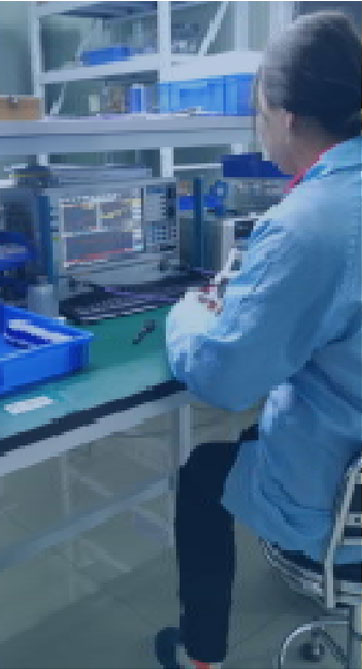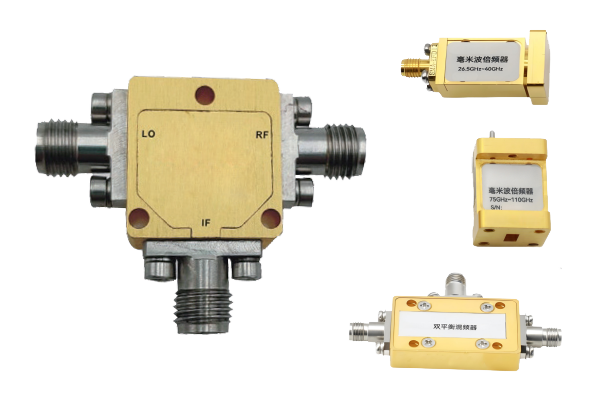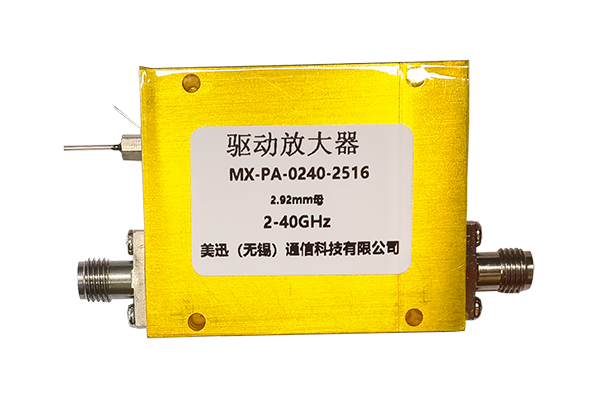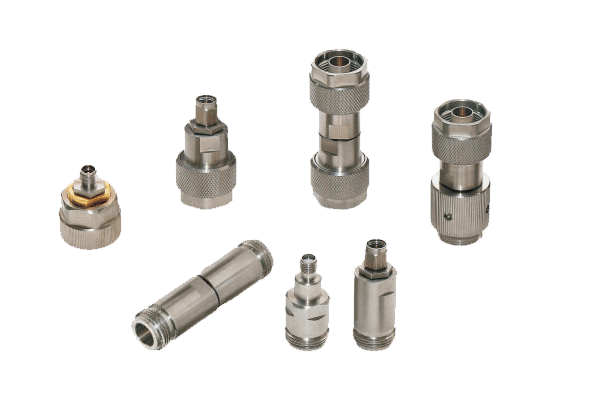
Pin diodes now serve as significant elements in high-bandwidth applications owing to their fundamental material and electrical qualities Their ability to operate with fast state changes and low capacitance while maintaining minimal insertion loss fits them to switching modulation and attenuation tasks. The main mechanism of PIN diode switching uses bias voltages to regulate copyright flow through the device. A change in bias voltage transforms the depletion-region width of the p–n junction, affecting conductance. Varying the bias voltage facilitates reliable high-frequency switching of PIN diodes with small distortion penalties
PIN diodes are often used in elaborate circuit arrangements where strict timing and control are essential They are useful in RF filtering systems for choosing which frequency bands to pass or suppress. Additionally their ability to handle elevated power levels makes them fit for amplifier power divider and generator circuits. Miniaturized high-efficiency PIN diodes now find more applications in wireless and radar technologies
Coaxial Switch Architecture and Performance Review
Developing coaxial switches is complicated and depends on careful analysis of key parameters A switch’s performance is determined by its type frequency range and how well insertion loss is controlled. Minimizing insertion loss and enhancing isolation are primary goals for coaxial switch engineering
Analyzing performance involves measuring important parameters like return loss insertion loss and port isolation. Metrics are assessed using simulation tools theoretical modeling and laboratory measurements. Rigorous performance analysis is necessary to secure dependable coaxial switch operation
- Simulations combined with analytic methods and practical experiments are standard for coaxial switch evaluation
- Coaxial switch behavior is sensitive to temperature, impedance mismatch and assembly tolerances
- Innovative trends and recent advances in switch design emphasize metric improvements while lowering size and consumption
Low Noise Amplifier Optimization Methods
Maximizing LNA performance efficiency and gain is necessary to secure exceptional signal quality in applications This calls for deliberate active device selection bias strategies and topological design choices. A robust LNA layout minimizes noise inputs while maximizing amplification with low distortion. Simulation based analysis is critical to understand design impacts on LNA noise performance. Lowering the Noise Figure is the aim, indicating enhanced preservation of input signal over generated noise
- Choosing transistors with inherently low noise characteristics is critically important
- Establishing proper bias conditions with optimal settings minimizes noise within transistors
- Circuit topology choices are decisive for the resulting noise performance
Approaches such as matching networks noise suppression and feedback loops help improve LNA behavior
Signal Switching Using Pin Diodes

Pin diode based switches enable adaptable and effective RF signal routing in various use cases The semiconducting switches operate at high speed to provide dynamic control over signal paths. Their minimal insertion loss and robust isolation characteristics prevent significant signal degradation. They find use in antenna selection systems duplexers and phased array antennas
Control voltages alter the diode resistance which in turn dictates switching operation. When off or deactivated the diode exhibits high resistance effectively blocking RF energy. When a positive control voltage is applied the diode resistance decreases reduces or falls allowing RF signals to pass
- Furthermore PIN diode switches boast speedy switching low power consumption and small size
Diverse design options and architectures for PIN diode networks allow implementation of sophisticated routing functions. Combining multiple switch elements makes possible dynamic switching matrices enabling flexible routing
Performance Assessment for Coaxial Microwave Switches

The evaluation assessment and testing of coaxial microwave switches is essential to confirm optimal operation in complex electronic systems. Several influencing factors such as insertion reflection transmission loss isolation switching speed and frequency range determine performance. Complete assessment involves quantifying parameters over diverse operational and environmental test conditions
- Moreover additionally furthermore the evaluation ought to include reliability robustness durability and environmental tolerance considerations
- Finally the result of robust evaluation gives key valuable essential data for choosing designing and optimizing switches to meet specific requirements
Review of Techniques to Reduce Noise in Low Noise Amplifiers
Low noise amplifiers are fundamental in wireless RF systems as they amplify weak signals and reduce noise contributions. This survey offers an extensive examination analysis and overview of approaches to minimize LNA noise. We examine investigate and discuss the fundamental noise sources including thermal shot and flicker noise. We further consider noise matching feedback solutions and biasing best practices to lessen noise. The review emphasizes recent innovations including novel materials and architecture approaches that decrease noise figures. With a complete overview of noise minimization principles and methods the review supports the design of high performance RF systems by researchers and engineers
High Speed Switching Applications for PIN Diodes

PIN diodes’ unique remarkable and exceptional behavior makes them appropriate for fast switching systems Minimal capacitance and low resistance support rapid switching speeds for applications needing accurate timing. Additionally their linear response to applied voltage aids in accurate amplitude modulation and switching behavior. This versatility flexibility and adaptability makes them suitable applicable and appropriate for a wide range of high speed applications Applications span optical communication systems microwave circuits and signal processing hardware and devices
Coaxial Switch Integration and IC Switching Technology
Coaxial switch IC integration provides critical improvements in signal routing processing and handling inside electronic systems circuits and devices. The ICs are designed to direct manage and control coaxial signal flow offering high frequency operation and reduced propagation insertion latency. Integrated circuit miniaturization creates compact efficient reliable and robust designs favorable for dense interfacing integration and connectivity use cases
- With careful meticulous and rigorous deployment of these approaches developers can accomplish LNAs with outstanding noise performance enabling trustworthy sensitive electronics With careful meticulous and rigorous deployment of these approaches developers pin diode switch can accomplish LNAs with outstanding noise performance enabling trustworthy sensitive electronics Through careful meticulous and rigorous application of such methods engineers can design LNAs with top tier noise performance enabling dependable sensitive systems With careful meticulous and rigorous execution of these strategies designers can obtain LNAs exhibiting excellent noise performance for sensitive reliable systems
- IC coaxial switch uses include telecommunications data communications and wireless network systems
- Aerospace defense and industrial automation benefit from integrated coaxial switch solutions
- These technologies appear in consumer electronics A V gear and test and measurement setups
Design Tips for Low Noise Amplifiers in mmWave Bands

mmWave LNA challenges include significant signal attenuation and greater sensitivity to noise sources. Parasitic effects are dominant at mmWave thus careful layout techniques and component choices are crucial. Keeping input mismatch low and power gain high is critical essential and important in mmWave LNA designs. Active device choice, e g HEMTs GaAs MESFETs InP HBTs, is critical for low noise performance at mmWave. Moreover the implementation and tuning of matching networks is critical to achieving efficient power transfer and correct impedance matching. Package parasitics must be managed carefully as they can degrade mmWave LNA behavior. Employing low loss transmission lines and considered ground plane layouts is essential necessary and important to reduce reflections and preserve bandwidth
PIN Diode Behavior Modeling for RF Switching
PIN diodes perform as significant components elements and parts across various RF switching applications. Comprehensive accurate and precise characterization of these devices is essential to enable design development and optimization of reliable high performance circuits. That entails analyzing evaluating and examining electrical voltage and current characteristics such as resistance impedance and conductance. Characterization also covers frequency response bandwidth tuning capabilities and switching speed latency or response time
Moreover additionally the crafting of accurate models simulations and representations for PIN diodes is essential crucial and vital for predicting RF behavior. Several diverse modeling approaches exist such as lumped element distributed element and SPICE models. Choosing the right model simulation or representation depends on specific detailed particular application requirements and desired required expected accuracy
High End Approaches for Low Noise Amplifier Design
LNA design work requires precise management of topology and component selection to minimize noise. Recent advances in semiconductor tech have unlocked innovative groundbreaking sophisticated LNA design techniques that diminish noise greatly.
Notable techniques include employing utilizing and implementing wideband matching networks incorporating low-noise transistors with high intrinsic gain and optimizing biasing schemes strategies and approaches. Moreover advanced packaging techniques and effective thermal management significantly contribute to reducing external noise sources. With careful meticulous and rigorous execution of these strategies designers can obtain LNAs exhibiting excellent noise performance for sensitive reliable systems
